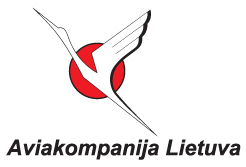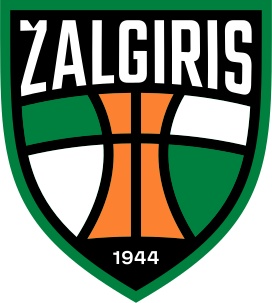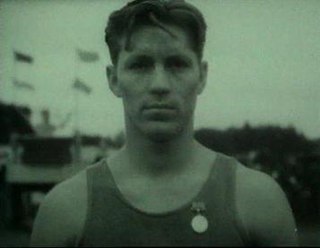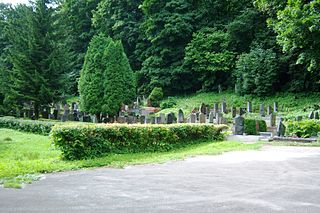
Kaunas is the second-largest city in Lithuania after Vilnius and an important centre of Lithuanian economic, academic, and cultural life. Kaunas was the biggest city and the centre of a county in the Duchy of Trakai of the Grand Duchy of Lithuania and Trakai Palatinate since 1413. In the Russian Empire, it was the capital of the Kaunas Governorate from 1843 to 1915.

Air Lithuania was a regional airline based in Kaunas in Lithuania. It operated scheduled and charter flights, provided cargo services and aircraft rental. Its main bases were Kaunas International Airport (KUN) and Palanga International Airport (PLQ).

Basketball Club Žalgiris is a professional basketball team that is based in Kaunas, Lithuania, and competes domestically in the Lietuvos krepšinio lyga. Founded in 1944, it is one of the oldest teams in the EuroLeague. Žalgiris is one of 11 European clubs to hold long-term licenses with the EuroLeague, which provides a guaranteed place in the regular-season phase of this league. Since the 2011–12 season, Žalgiris plays its home games in Žalgiris Arena, which was built just before EuroBasket 2011. The club's name commemorates the victorious Battle of Žalgiris. Both Žalgiris and Grunwald translate to "green wood".

Lithuania competed at the Summer Olympic Games for the first time at the 1924 Summer Olympics in Paris, France. On Olympic application Lithuania listed seven sports, but sent athletes only for football and cycling.

Kazys Petkevičius was a Lithuanian basketball player who competed for the Soviet Union in the 1952 Summer Olympics and in the 1956 Summer Olympics. He played for Žalgiris in Kaunas and later for Spartak Leningrad in Leningrad.
Vilniaus diena is the Lithuanian language newspaper printed in Lithuania’s capital city Vilnius and attributed for the city.

Kaunas Fortress is the remains of a fortress complex in Kaunas, Lithuania. It was constructed and renovated between 1882 and 1915 to protect the Russian Empire's western borders, and was designated a "first-class" fortress in 1887. During World War I, the complex was the largest defensive structure in the entire state, occupying 65 km2 (25 sq mi).
The Kaunas Museum for the Blind in Kaunas, Lithuania opened in 2005. It was the first museum for the blind in the Baltic States and one of the first in Eastern Europe.
The Sunday Football League, SFL(lith: Sekmadienio Futbolo Lyga) is an amateur association football level 5 league in Lithuania. The league was established in 2005. It is managed by an organization VšĮ "Sekmadienio futbolo lyga“, run by Vilnius District Football Union (VRFS), independently from the Lithuanian Football Federation. Players from all other leagues except the top Lithuanian division A Lyga are allowed to play in the SFL as well as their respective league clubs. All games take place on Sundays, unlimited substitutions are allowed.

Petras Rimša was one of the first professional Lithuanian sculptors and medalists.

The Jewish cemeteries of Kaunas are the four Jewish cemeteries of the Lithuanian Jews living in Kaunas, known to them as Kovne, Lithuania. Jewish people started settling in Kaunas in the second half of the 17th century. They were not allowed to live in the city, so most of them stayed in the Vilijampolė settlement on the opposite than Kaunas Castle right bank of the Neris River, near its confluence with the Nemunas River. Since the second half of the 19th century, Kaunas became a major center of Jewish cultural and economic activity in Lithuania.
Giedrius Antanas Kuprevičius is a Lithuanian composer and music educator.
Tiesa was the official daily newspaper in the Lithuanian SSR. Established in 1917, the newspaper soon became the official voice of the Communist Party of Lithuania. After the Lithuanian victory in the Lithuanian–Soviet War, the party and the newspaper were outlawed in Lithuania. Therefore, it was first printed in exile and later illegally in Kaunas. Tiesa survived irregular publishing schedules, frequent relocations, staff changes, and other difficulties and, after the Soviet occupation of Lithuania in June 1940, became the official daily of the new communist regime. At its peak, its circulation exceeded 300,000 copies. After the collapse of the Soviet Union, Tiesa lost its official status and its circulation shrunk. The publication was discontinued in 1994.
Audrius Šlekys was a Lithuanian football player.
Aleksandras Bendinskas was a member of the anti-Soviet resistance in Lithuania and, after the independence of Lithuania, a member of its parliament, Seimas.
Vytautas Landsbergis-Žemkalnis was a Lithuanian modernist architect most active in interwar Lithuania (1926–1939). He was the father of Vytautas Landsbergis, the first Lithuanian head of state after independence from the Soviet Union.

Sofija Čiurlionienė née Kymantaitė was a Lithuanian writer, educator, and activist.

Ramybė Park is a public park in Kaunas, Lithuania, established in 1959 in the territory of the Kaunas City Old Cemetery that was also known as the Carmelite Cemetery. The cemetery was established in 1847 and became the main city cemetery with sections for four different religions – Roman Catholics, Eastern Orthodoxs, Lutherans, and Muslims. During World War I and subsequent Lithuanian Wars of Independence, Russian, German, and Lithuanian soldiers were buried in the cemetery. During the interwar period when Kaunas was the temporary capital of Lithuania, many famous people were buried there and several buildings were constructed on the cemetery's territory. In 1930, a monument to fallen Lithuanian soldiers with a tomb of an unknown soldier was unveiled. Around the same time, a tradition to honor fallen soldiers on the All Saints' Day began. On All Saints' Day in 1956, a spontaneous anti-Soviet demonstration started in the cemetery in support of the Hungarian Revolution of 1956. After smaller incidents in 1957 and 1958, Soviet authorities decided to demolish the cemetery and turn it into a recreational park. Families were given a few months to rebury their relatives elsewhere. Tombstones, monuments, crypts and a Catholic chapel were demolished. The Soviets installed a monument with ashes of four communists executed after the December 1926 coup. After Lithuania regained independence in 1990, the Soviet monument was moved to Grūtas Park. The monument to Lithuanian soldiers was reconstructed, and new monuments dedicated to the participants of the June Uprising and Lithuanian partisans were erected.









